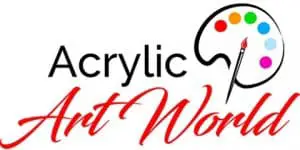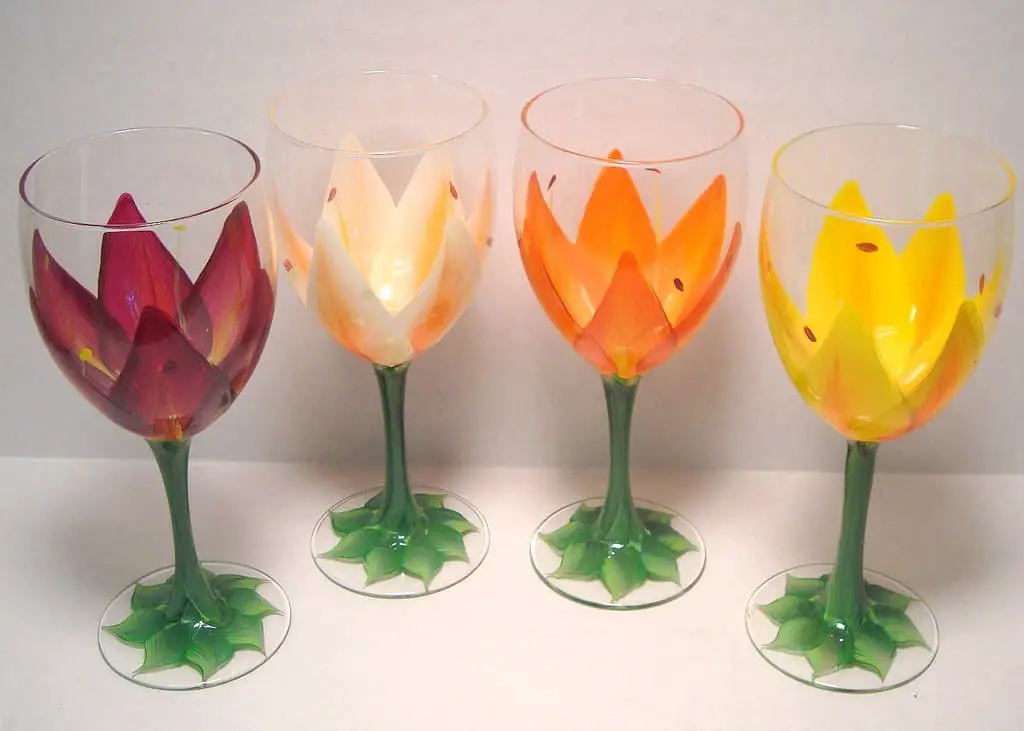If you’re new to acrylic paints, it’s without a doubt that acrylics are one of the most versatile and vibrant paints out there. It can be used on polymer clay, wood, fabric, and many other surfaces.
So, can you bake acrylic paint onto glass? Most definitely! It’s one of the best types of paints to use on glass, and in this article we will go over everything you need to know to bake and seal the acrylic paint onto glass.
Acrylic Paint on Wine Glasses
With “paint nights” becoming so popular, I decided to check one out myself, and what I found was not only a room with the traditional canvas projects, but people were actually painting wine bottles and wine glasses. Painting on a wine glass was so much fun, and it adds a unique touch to your glass shelf.
You want to make sure you can get a wine glass that can stand some heat, since it’s always recommended to bake it in the oven, to properly seal the paint. In one of my articles I go over baking and sealing acrylic paint in the oven.
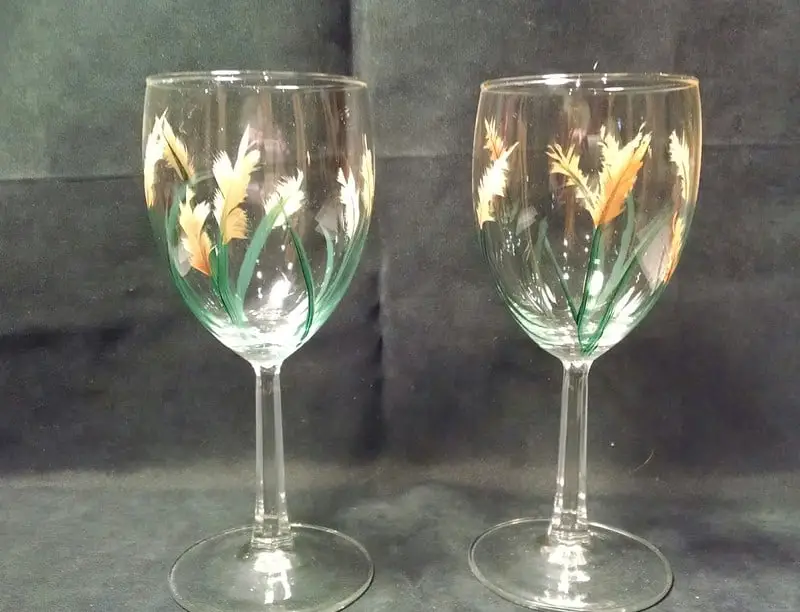
As with any painting project, the hardest part is figuring out what your design should be, and what kind of technique to use with your paint. I find flowers and certain patterns are very easy and fun to do.
My top recommendation for acrylic paint is Arteza. They have a great selection and they’re very affordable!
An easy technique is if you want to paint words in your glass such as, Love, or Beautiful, you can actually print out the words and tape it to the inside of your glass. That way, you’re essentially just tracing with paint on the glass, as opposed to free-styling the writing.
Always remember to not to get the paint too close to the rim of the glass. You don’t want your mouth to come into contact with the paint when you’re enjoying wine in these glasses later.
How to Bake Acrylic Painted Wine Glasses
- Allow your glass to dry at least 24 hours after painting
- Place the glass in a cool oven
- Set temperature to 350ºF
- Bake the glass for 30 minutes
- Turn the oven off and let it cool before taking it out
Your cured glass project can be washed 72 hours after baking. You can also wash your painted glass in the dishwasher, but because it’s handmade, I always recommend washing by hand. Do not microwave whatsoever.
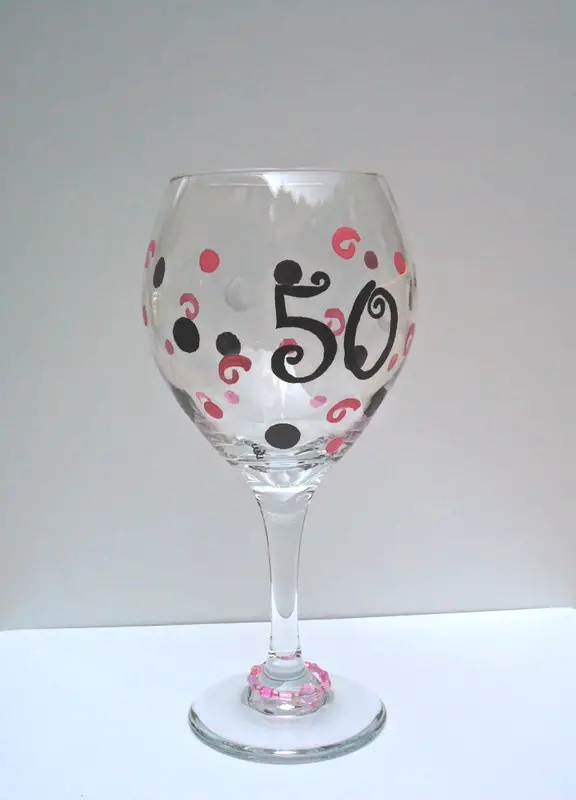
Acrylic Paint on Wine Bottles
Instead of recycling your empty wine bottles, did you know you can reuse them by turning them into beautiful decorations for your home? I love to paint my wine bottle and add some string lights inside for a unique look.
Before you decorate your bottles, make sure to completely empty them of any leftover wine and rinse them out before you get started.
Because acrylic paints stick to glass, you won’t have to worry about them chipping or peeling off, after you cure it though. Below I talk about the process and options to cure your hand painted glass.

If you want to add a base color to your wine bottles, you can spray paint a white or black layer on the bottle so your colors can be extra vibrant.
In a well-ventilated area, spray paint the wine bottles white. Start with a thin layer first, then let dry. Repeat 2-3 times, changing your angle frequently, until the bottles are completely covered. Let the spray paint dry.
Once your bottle is dry, grab your acrylic paints and get creative! I love painting flowers designs, or simple abstract strokes on my wine bottles.
How to Bake Acrylic Painted Wine Bottles
Just like the steps above, make sure to follow the instructions properly to ensure you glass gets cured correctly, so it can last a while!
- Allow your glass item to dry after painting, and make sure that all layers of paint have dried.
- Place the glass in a cool oven, as the glass must heat gradually with the oven to avoid breakage; do not place glass in a hot oven.
- Set oven temperature to 350ºF.
- Once the temperature has reached 350ºF, allow the glass to bake for 30 minutes.
- After 30 minutes, turn the oven off and let the wine bottle cool down completely before removing from the oven.
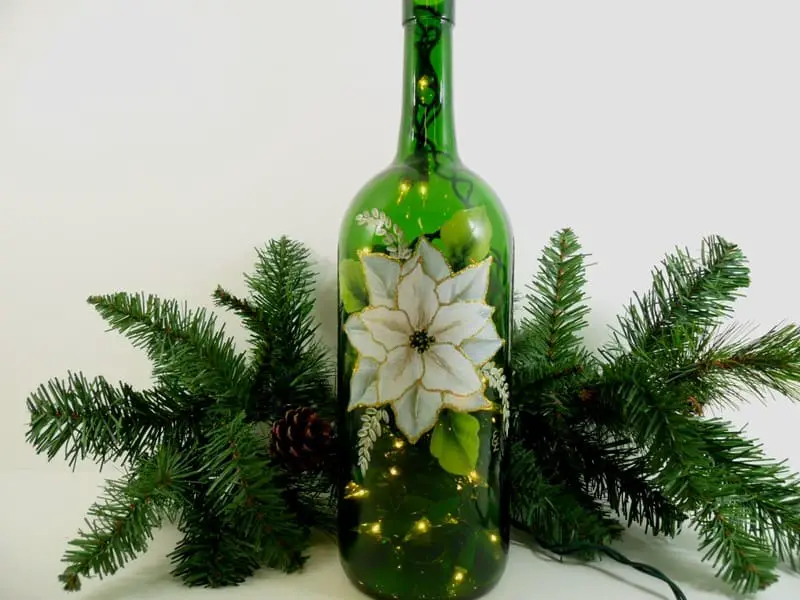
Can You Use Acrylic Paint on Mason Jars?
Yes! Acrylics paint works great on mason jars. It’s actually one of my favorite glass projects to paint. Amazon has a cool set so you can get multiple jars to decorate and paint.

Mason jars are incredibly versatile, and I personally use them to store my acrylic paint in them.
To paint mason jars with acrylic paint, make sure they’re wiped down with rubbing alcohol, and then for best results use a painting sponge so your color goes on smooth. You can also use a brush which I always do, and then the more detailed brushes for the designs you’re painting.
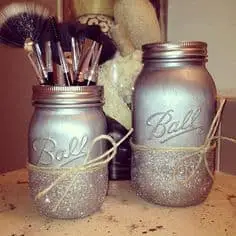
How to Paint and Distress Mason Jars
Distressed mason jars are trending right now as DIY projects, so I though I’d share how I did mine. Here’s what you’ll need.
Materials:
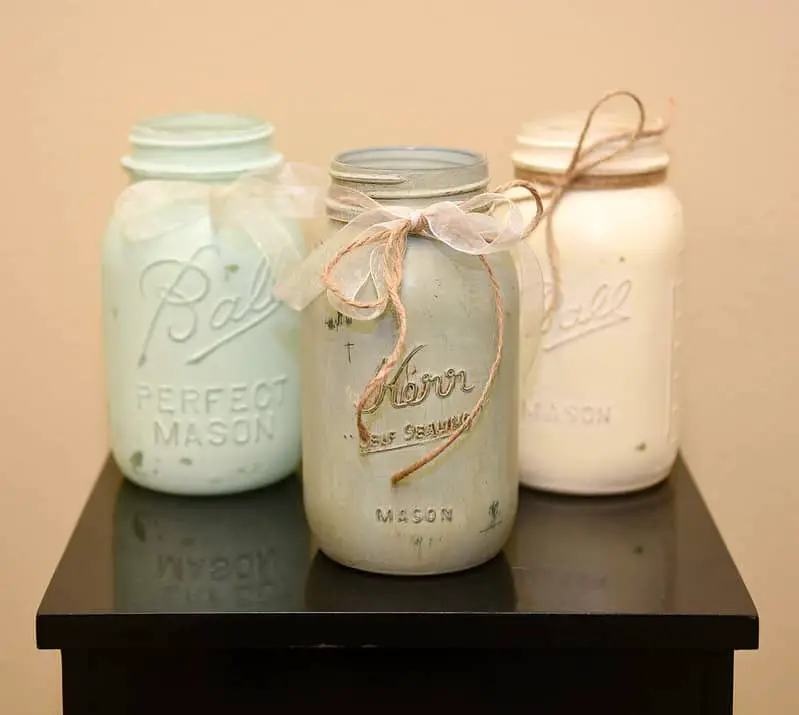
If you’re starting with a new case of mason jars, you’re good to go. But if you’re using old jars that have been used for other purposes, you’ll want to give them a thorough cleaning and wipe them down with some alcohol pads. After you wipe down with rubbing alcohol, wash your jars with with hot, soapy water. Dry completely.
Start with two coats of paint. Let paint dry completely between coats. Above I linked chalk paint, but if you’re using regular acrylic paints, makes sure you give each coat enough time to dry, otherwise it will peel off later on.
To get that distressed look, I personally use 80 grit “No-Slip Grip” sandpaper that I cut into rectangles and then fold over, giving me two side to work with. I always start with the top rim and then sand along the threads. Then I distress the sides and any raised edges.
I leave the best for last, the front. With this part I’m more careful because I want to completely sand the lettering on my jar. I’ll also add a little distress to the top part to really give it that rugged look.
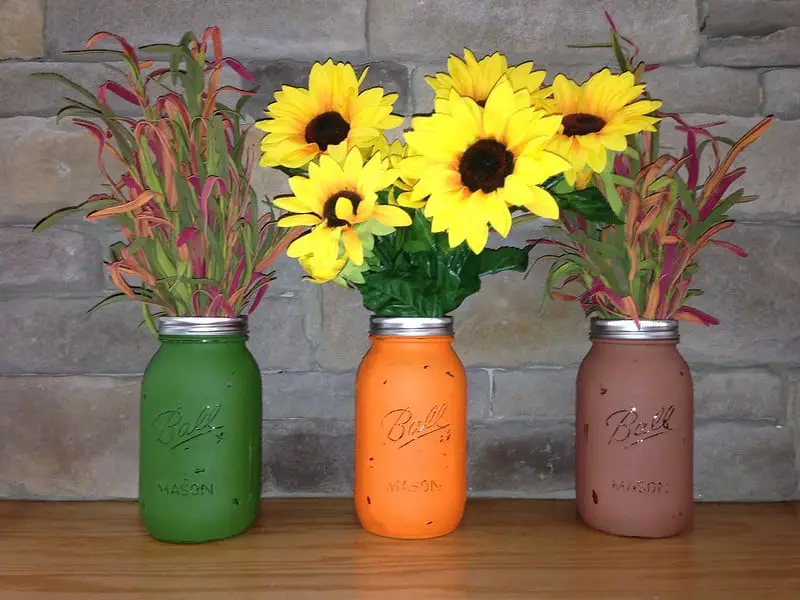
How to Seal Acrylic Paint on Glass
After you paint your wine glass or wine bottle, you want to make you sure it. You can do this by air drying, or by sealing it and baking it in the oven. I highly recommend baking it in the oven if you intend to use your glass.
If you prefer a matte look and you won’t really be using it, then you can air dry, but it will chip and peel off eventually. However this method does take about 21 days to fully cure.
To bake it in the oven, it’s the same steps from above. Simply place the hand painted wine glass or wine bottle on a cookie sheet and place on a low rack in the oven.
Heat the oven to 350 degrees, and only once the temperature has reached 350ºF, allow the glass to bake for 30 minutes and leave it in for about 30 minutes.
Turn off the oven and allow the glass to cool down naturally before removing it.

YOU MUST PUT THE PAINTED GLASS IN THE OVEN BEFORE YOU TURN IT ON, TO PREVENT THE GLASSES FROM BREAKING.
Once the paint has cured on your wine glasses, they are top-rack dishwasher safe. I often use mine for special occasions or on my girls night in.
I recommend this acrylic paint sealer from Amazon, to gloss your glass project. Always use about 12 inches of a distance – not too close or it will pool up. Use a gentle back-and-forth motion to apply the spray.
You can use an additional coating, even a third if needed, but let one coat dry for at least 15 to 30 minutes before the next coat, if it’s humid wait 30 minutes. Then let the glass dry at least 24 hours.
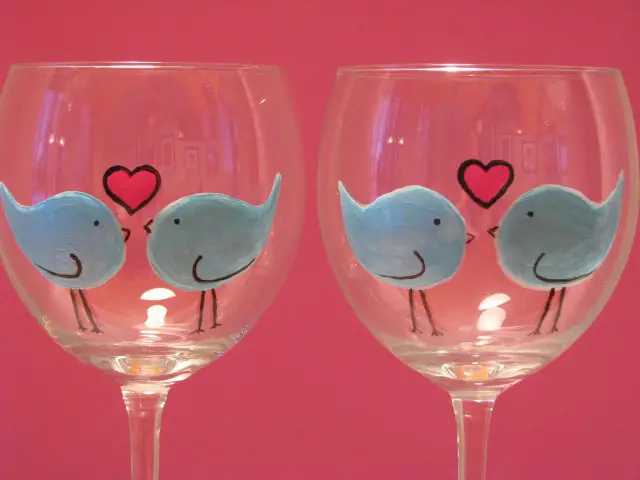
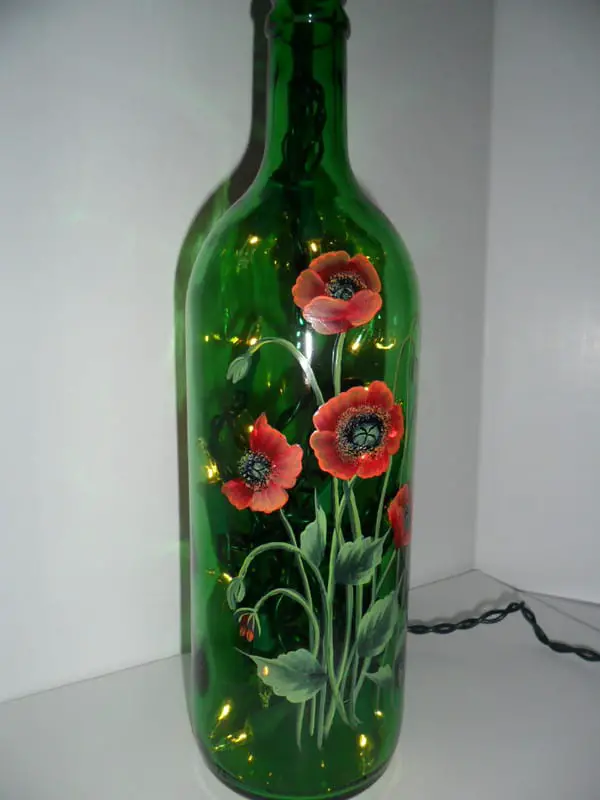
Air-Dry Method for Curing Painted Glass Projects
Paint is cured to the surface after 21 days; however, air-dried glass projects are NOT suitable for use in the top rack of your dishwasher. I always recommend curing your glass in the oven.
I hope this article answered all you acrylic painting questions. As always, don’t forget to check out all my other acrylic painting articles and Recommended Products.
Happy Painting!
